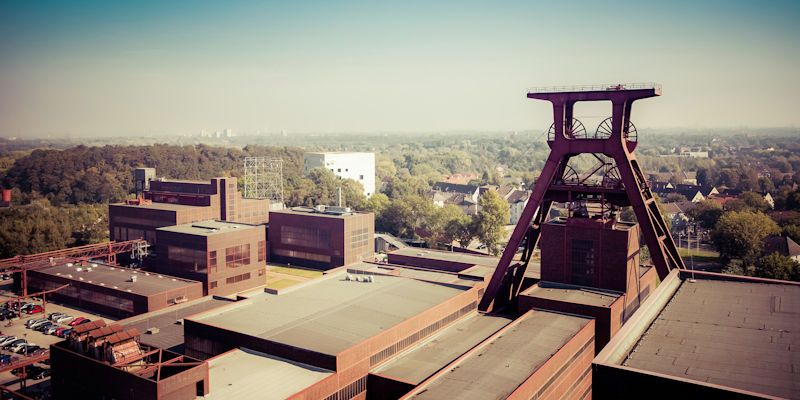Using the underground to fight climate change

Policy brief 2, SRI 29, 29 Sept 2020. Imogen Rattle, James Van Alstine, Eric Peterson, N Shaw, Sandra Piazolo
Download or view the full policy note: Using the underground to fight climate change
Brief summary
The policy brief introduces a suite of technologies which use underground assets to store heat and energy, or provide a low carbon means of energy generation. These present regional authorities with an opportunity for low carbon economic regeneration which is sympathetic to local industrial heritage.
Overview
- In order for the UK to reach its Net Zero goals, new approaches are needed to decarbonise heat and energy storage
- Old mines can be used to store heat, extract geothermal heat or house gravity-operated energy storage
- Examples of similar schemes in action highlight the need for proactive leadership and engaging early with key stakeholders.
- Local Authorities should act now to investigate their local underground assets, prior to agreeing above ground developments.
If the UK is to reach its Net Zero goals, proactive leadership and joined up solutions are needed. The decarbonisation of energy generation has shown significant progress, but urgent action is required on storage of intermittent renewable energy and heat for the UK to meet its Net Zero targets (Committee on Climate Change 2020).
There is potential for underground assets, such as old mines, to be used for low-carbon heat and energy storage. However, without exploratory work this potential cannot be assessed. Proposals to streamline the planning system in England to allow ‘automatic’ planning permission for new homes (MHCLG 2020), must ensure the new process allows for geoasset assessment. If not these opportunities could be lost.
Subsurface heat and energy solutions
Underground assets can be both naturally occurring features such as aquifers, and man-made features such as disused mine workings. Mature technologies that can be used in these situations include:
- Thermal storage in water: Thermal storage systems preserve heat at times of low demand and provide a heat source at times of peak demand, balancing fluctuating renewable heat generation as part of renewable-powered district heating networks.
- Energy storage by suspended weights: Suspended weight gravity storage systems can be housed in disused mine shafts. They draw power from the electrical grid to raise a suspended weight at times of high production. Power is returned to the grid in times of high demand by releasing the weight and recovering energy using regenerative braking.
- Mine water energy generation: Geothermally warmed water in flooded mine workings can be used to power district heating schemes, providing both heating and cooling for surrounding properties.
Understanding the potential
Many UK cities are underlain not only by natural geological layers suited for the outlined technologies, but also - due to their industrial heritage - an extensive legacy of deep coal mining which dates back hundreds of years. The Yorkshire and Humber region has subsurface characteristics typical for such industrial areas and there are mine workings beneath Leeds potentially available for decarbonisation technologies.
Case studies
Developing existing subsurface assets to support the low carbon transition is a new departure for the UK. However, the existing Leeds district heat network and the development of the UK’s first large scale mine water energy scheme in Seaham Garden Village, County Durham, provide two examples of good practice.
- The Leeds Pipes district heating scheme is the UK’s largest district heating scheme. Proactive Local Authority leadership has been an essential part of the scheme’s success. The city council helped create favourable market conditions and supportive planning policy.
- Seaham Garden Village is a new development adjacent to the Dawdon Mine Water Treatment Plant in County Durham to supply heating to 1,500 homes. The North East Local Economic Partnership (LEP) found early engagement with key stakeholders and an understanding of the sources of expertise available were critical in mobilising development.
Recommendations
Local Authorities are essential for the implementation of low carbon heat strategies due to their regulatory responsibilities, ownership of housing stock, links with regional stakeholders, and their longevity. This regional focus is critical for the development of subsurface infrastructure which is, by definition, place-specific. Subsurface development has the potential to deliver on council aims around fuel poverty, air quality, decarbonisation and economic growth.
In order to make the most of these opportunities we recommend that Local Authorities should:
- Share expertise and engage: Case studies such as those above have the potential to act as a roadmap for other schemes. Local Authorities should engage early with key stakeholders and communities to tap into local expertise and gain support.
- Assess potential assets early: The status of subsurface assets should be assessed before plans for above surface developments are finalised to ensure opportunities for decarbonisation are not overlooked.
- Build a supportive policy environment: Locally, decision-makers should consider upfront the demand for any heat and storage services which the subsurface might provide, potential commercialisation models for these services and how local planning policy might enable this. Nationally, dialogue is required between regional and national bodies to ensure proposals to streamline planning policy do not inadvertently rob Local Authorities of the opportunity to undertake the necessary appraisals.
Further information
Sandra Piazolo is Professor in Structural Geology and Tectonics, School of Earth & Environment, University of Leeds and corresponding author for this policy brief.
The Geoassets in Yorkshire project aimed to understand the barriers and opportunities for the development of onshore subsurface assets within the Yorkshire and Humber region.
This is a joint brief by Policy Leeds and the Sustainability Research Institute Policy and Practice briefing series.
Feature image: Photo by Markus Spiske from Pexels
To cite this policy brief, please reference: Rattle et al. (2020) Using the underground to fight climate change. Brief 2, SRI 29, Policy Leeds, University of Leeds. https://doi.org/10.5518/100/63